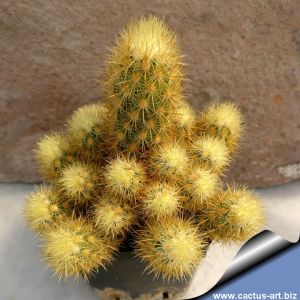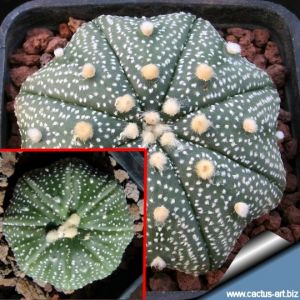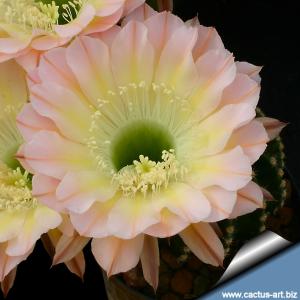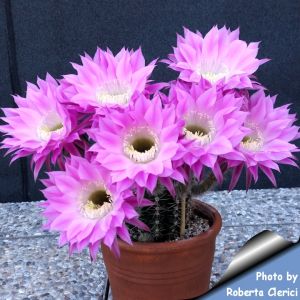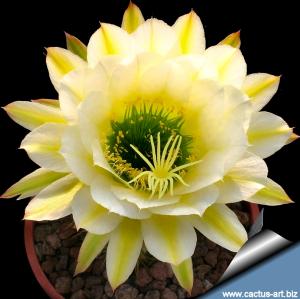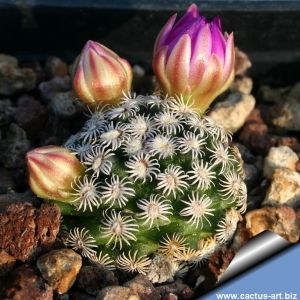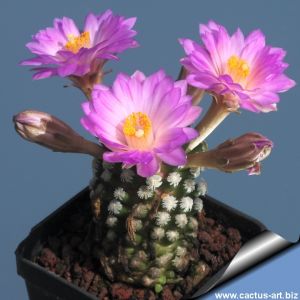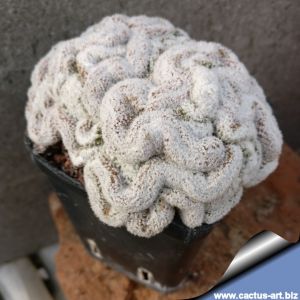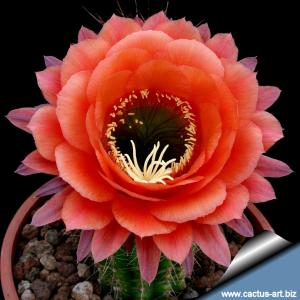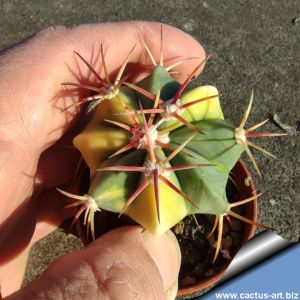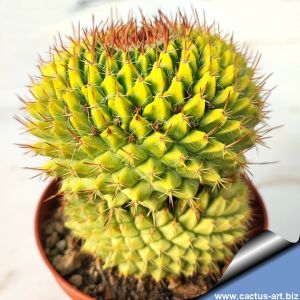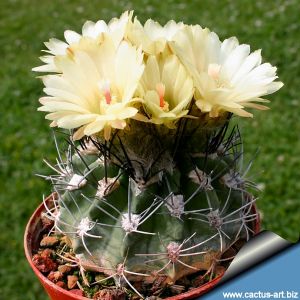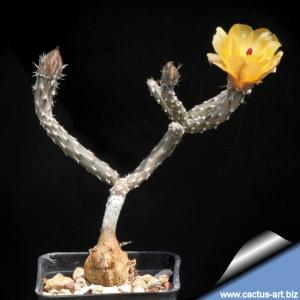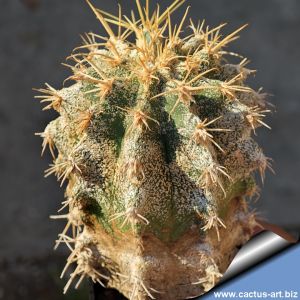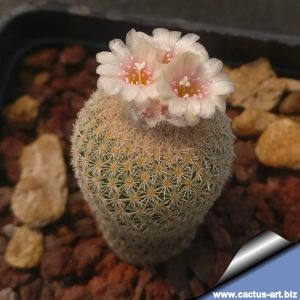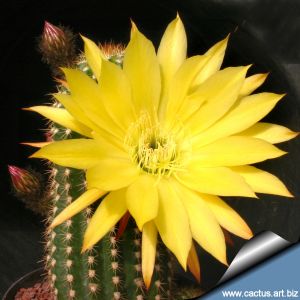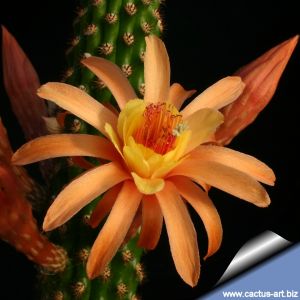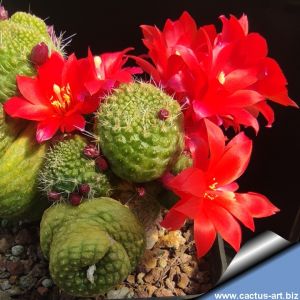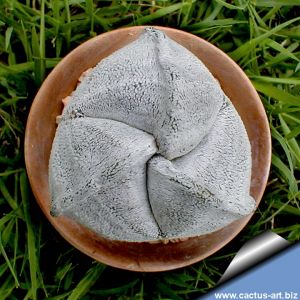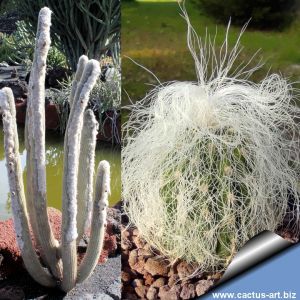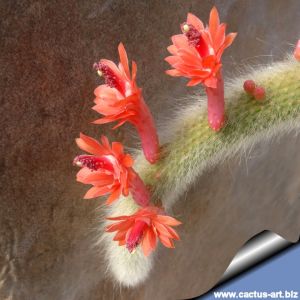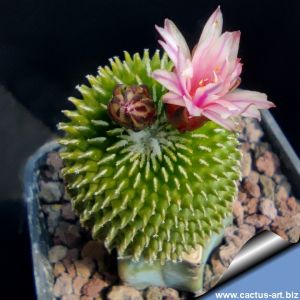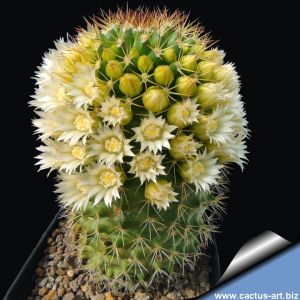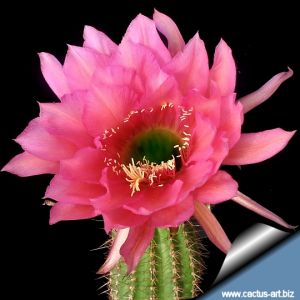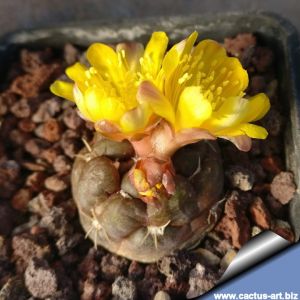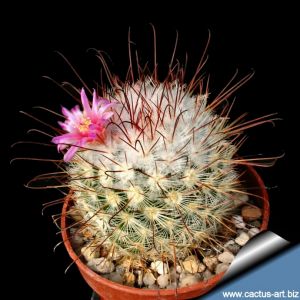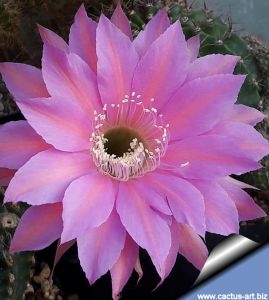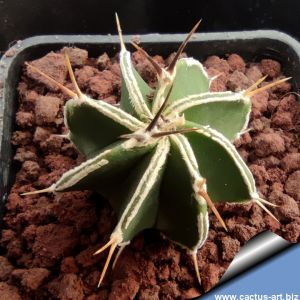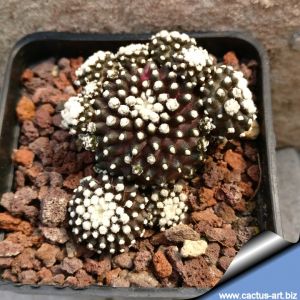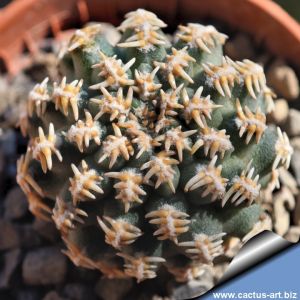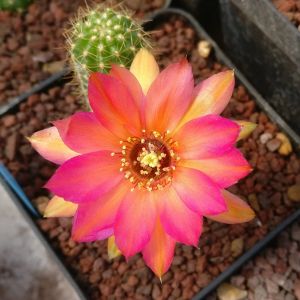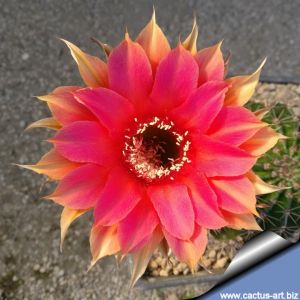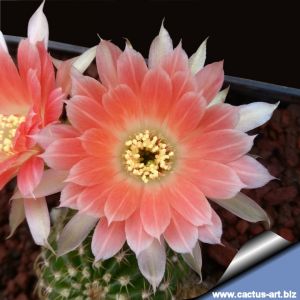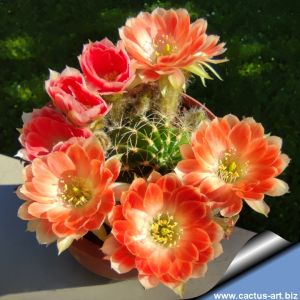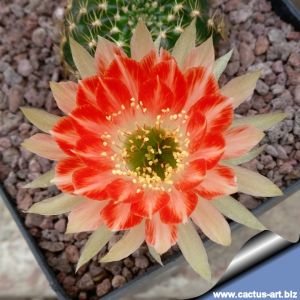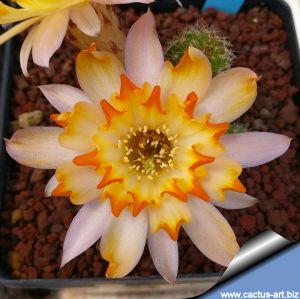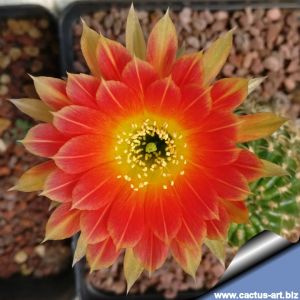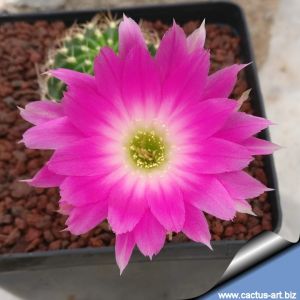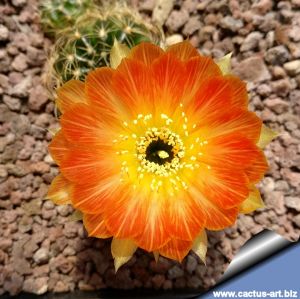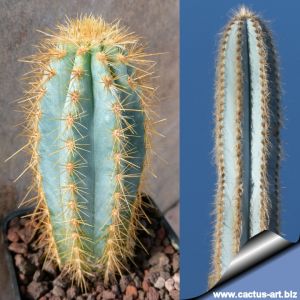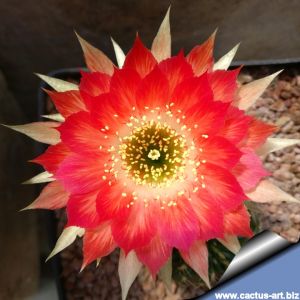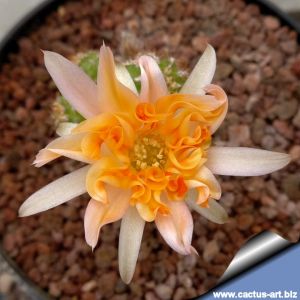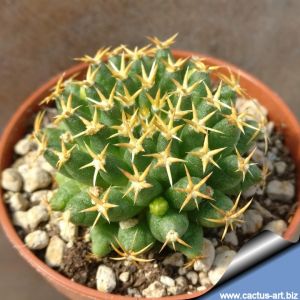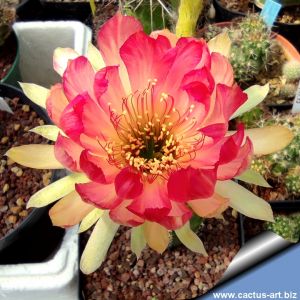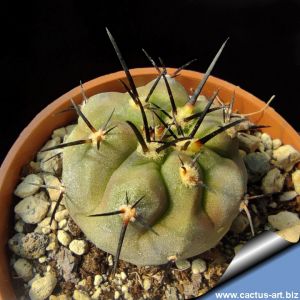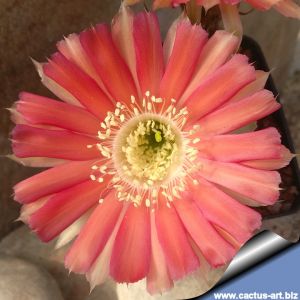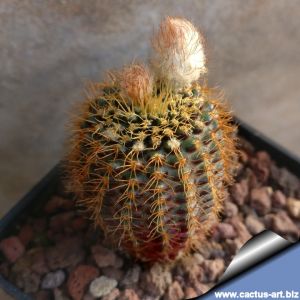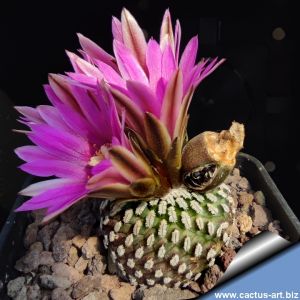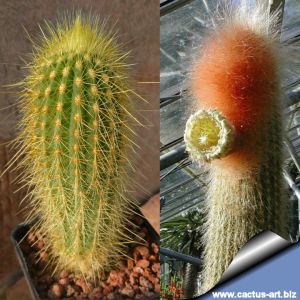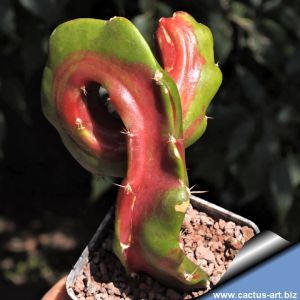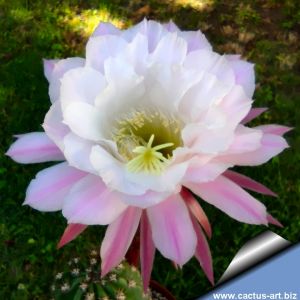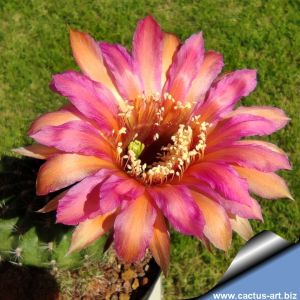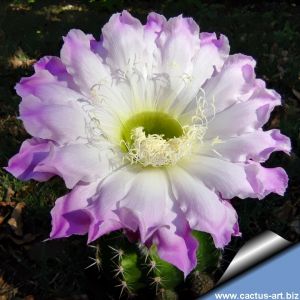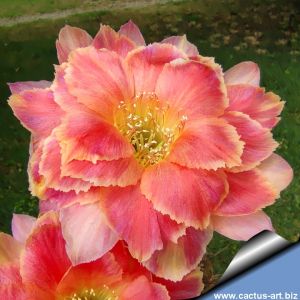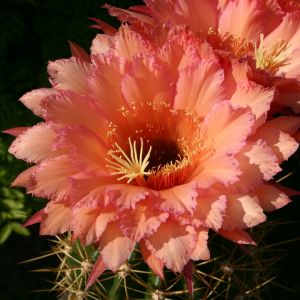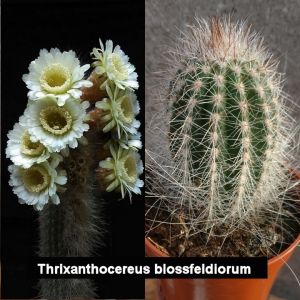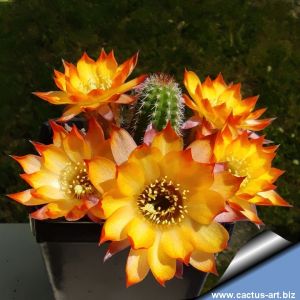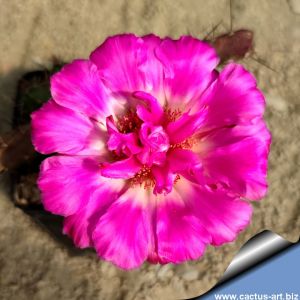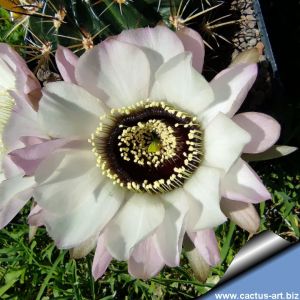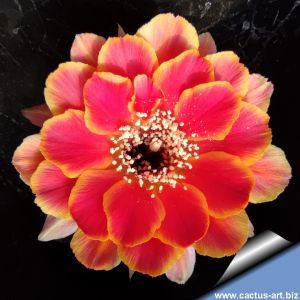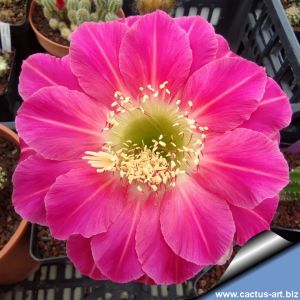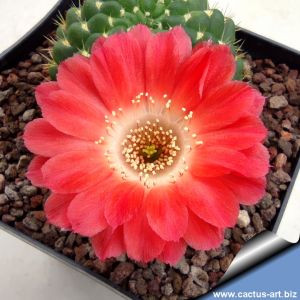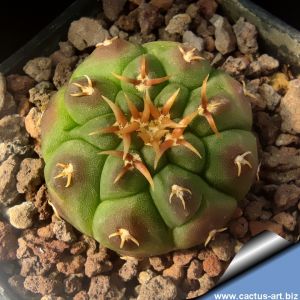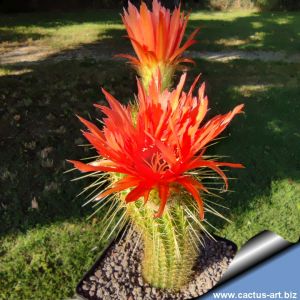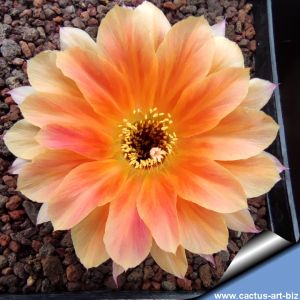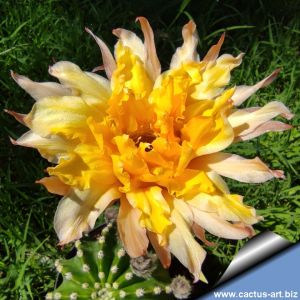-
1
This uncommon (but very nice) cactus, has tiny finger shaped stems and will slowly form small clusters with dense golden spines. Spines are gold-amber coloured. Flowers tiny pale yellow on the apex.
-
2
The main particularity of this cultivar are the tip of the rib that are seated within the plants body, while the suture line between the ribs is turned outward. This unusual feature give this plant it unique starry-looking.
-
3
The flowers vary noticeably from one another. Some show thin, irregular, and pointed petals, while others appear more typical in shape. This striking variability results in truly strange and intriguing characteristics.
-
4
-
5
Flowers are star-like, reaching up to 14 cm in diameter, with ruffled lavender-pink petals featuring a darker central vein. The throat and staminal filaments are white, and the stigma is light green. The blooms are fragrant, and the stems readily pup.
-
6
This is a well-rooted plant with a diameter of approximately 6 cm
-
7
With the uniqueness of the spine patterns this tiny plant is a real gem and one of the most sought-after and distinctive species of Mammillaria. Diameter 1,5-2 cm flowering size!
-
8
Mammillaria theresae is one of the most sought-after and very distinctive species of Mammillaria, this little species is immediately recognisable by its spination even when not in flower. Blooms very large magenta-pink.
-
9
Among the most beautiful crested cacti, quickly forming clusters draped in snow-white wool. Each specimen's unique undulations create living sculptures of exceptional beauty. Pure botanical artistry!
-
10
-
11
Exceptional hybrid bred from seed (not grafted). Diameter 4.5 cm. The spines are red and bright as in E.parryi while the robust glaucous-green body has a splendid yellow variegation. (Single specimen, selected plant! Sown in 2018)
-
12
# # # SPECIAL PLANT # # # (Selected specimen)
Diameter 7cm
-
13
# # # SPECIAL PLANT # # # (Selected specimen)
H 9 cm, diam 8,5 cm
-
14
This is a very beautiful and peculiar plant. The green body contrasts with the black spines. The creamy white flowers with pink hues are very pretty.
-
15
A geophytic cactus with powerful tuberous roots and numerous cylindrical, deciduous branches. Its architecture is truly surprising and visually striking.
-
16
It has flexible interlacing spines up to 1-2 cm long, that are pectinate, flexible, creamy white or whitish-yellow with dark tips, recurved backwards, sitting on the plant like spiders.
-
17
(H 10-13 cm, grafted on F. glaucescens). Remarkable chimera blending A. caput-medusae (white flecks and long tubercles) with Ferocactus (ribbed body with spines). (Grafted onto a base of Ferocactus glaucescens.)
-
18
This is a petite cactus, which branches and becomes somewhat elongated when old. The short spines are appressed to its body, reddish-gray or brownish in the crown of adult plants. Small creamy pink flowers sprout from the wool at the apex.
-
19
-
20
-
21
An unusual and sought-after mutation with small green tubercles ending in a short tip pointing toward the apex, entirely spineless or with a few scattered white bristles. Vivid red flowers further enhance the charm of this rare treasure.
-
22
Exceptionally rare: a genuine Coahuilense featuring just three ribs!!!
-
23
Cephalophorus senilis is a columnar and erect cactus 6 to 10, or even 15, meters high. The most striking feature is the shaggy coat of long, white silky hairs suggestive of unkempt hair on an old man and hence the name old man cactus, and similar names.
-
24
Long hairs on stem, super flowers.
-
25
A tiny spineless form with spherical growth habit that slowly branches producing small clusters. Grafted on short Myrtillocactus.
-
26
A subtly elegant and refined variety, exceptionally floriferous: pure white flowers arranged in rings near the apex, with creamy-white stamens at their center. A must-have for lovers of white-flowered cacti.
-
27
-
28
Rootted cuttings. Stem globose less than 5 cm in diameter, covered with large rounded tubercles. The colour can vary from olive-green to purple to brown with a woolly apex. The base becomes corky with age.
-
29
A stunning clump-forming cactus, growing in bowl-like mounds. Its translucent white radial spines contrast with hooked reddish-brown centrals. Annual blooms form perfect rings of carmine-pink flowers.
-
30
Echinopsis with large petals fading from pink to lilac and faint orange veining. The wide corolla highlights an olive-green throat and a ring of pale stamens. Elegant, luminous, and profusely flowering.
-
31
Japanese cultivar easily distinguished by its woolly areoles connected by a continuous felt-like line along the ribs. The smooth epidermis is green and lacks white flecking, making the pale lines stand out beautifully.
-
32
Echinocereus amoenus v. aguirre typically forms small clumps and produces large pink flowers. The stems are not pressed against each other, and the tubercles stand out noticeably. The body color is light green, gray-green or bluish.
-
33
It forms many tiny dark purplish bodies covered in contrasting white woolly areole. It looks like Mammillaria luethyi and produces a nice patch over time.
-
34
Pygmaeocereus bieblii is a fascinating little, geophytic cactus with short thick spines. It usually grows solitary but occasionally forms small clusters or even large mats flat to the ground. It is really a particular cactus with very peculiar spines.
-
35
A beautiful bloomer, Chamaecereus hybrid (Chamaelobivia) cv. MEX 271-4, features gorgeous oranage and purple flowers from spring to summer. The color on the first day is darker red-purple, while on the second day it shines and becomes violet.
-
36
Striking hybrid with 11 cm flowers: deep red-purple inner petals with orange midribs, soft reddish-pink outer petals with pale tawny tips, and deep scarlet filaments—boldly contrasting.
-
37
Lobivia hybrid with a large daisy-shaped flower: peach-pink petals darken toward the center and lighten at the edges, revealing a fine pale midline. A bright white throat enhances the cream-colored stamens.
-
38
-
39
-
40
Chamaelobivia ’Lincoln Gem’ is a nice hybrid that bears bright, beautiful and golden/orange blooms with wavy petal margins. It is a fast-growing flowering cactus variety that produces clumps of columnar stems.
-
41
-
42
-
43
-
44
-
45
Pilosocereus azureus is one of the most spectacular columnar tree-like cereus. It ramify at the base or develops a distinct trunk with dozens of erected bluish-silver branches.. This is one of the bluest columnar cacti.
-
46
-
47
G. calochlorum v. proliferum is a clustering cactus forming low, flat-topped clusters of many stems that grow level to soil. The spines are wispy and creamy white to brown. The light pink flower is trumpet shaped with curved petals and open completely.
-
48
-
49
-
50
This variety stands out from all the others for the unusual combination of colors, the petals are creamy-yellow with bright pink to purple red tips. Very elegant and unique.
-
51
Copiapoa cinerea is one of the most admired species of cacti with chalky/white stems which contrasts well with the jet-black spines. The white coloration is a waxy coating produced to prevent dessication in it's extremely dry environment.
-
52
-
53
-
54
Turbinicarpus pseudopectinatus is an extraordinary cactus with many small spirally-arranged tubercles tipped with tiny white spines in a comb like formation. Flowers are pinkish white to bright pink with darker magenta or reddish-brown mid-veins.
-
55
Vatricania guentheri is a shrubby columnar cactus featuring attractive golden-spined stems with varying densities of fox-red lateral cephalia. Any devoted cactophile would be thrilled to see Espostoa guentheri in its natural habitat.
-
56
Hylocereus cv. Rainbow Dragon, a fusion of Hylocereus trigonus and Gymnocalycium mihanovichii ‘Hibotan’, is a chimera: a single plant in which genetically distinct tissues from both species stably coexist.
-
57
Flower featuring white-pink petals that transition to a vibrant pink at the edges. The outermost petals are lilac, and the throat is green.
-
58
Showy, large blooms displaying a blend of mauve, pink, and orangish tones.
-
59
A breathtaking bloom! Milky white petals fading to delicate lavender, each flower uniquely charming - some with elegantly curled edges forming dreamy swirls, others with perfectly straight margins.
-
60
Large flowers with petals displaying warm hues reminiscent of a goldfish—coral, orange, amber, soft pink, and cream-yellow toward the ruffled, translucent margins. A spectacular bloom.
-
61
Rooted cuttings 5 o more cm
-
62
Trixanthocereus blossfeldiorum is a columnar cactus up to 2.5 m tall, it is now classified in the Espostoa and flowers 3 or 4 times in the summer, but you have to get up early because the flowers only last one night, but a wonderfull display!
-
63
LINCOLN SUNKISSED is a striking Chamaecereus (Chamaelobivia) hybrid that blooms abundantly from spring through summer, featuring bright yellow petals with dark orange margins and tips.
-
64
-
65
The flowers are almost white with only a hint of pink in the outer petals. The throat is very dark purple, almost black. In the typical cv. ANEMONE the flowers have a more rosy color.
-
66
The plant produces variable blossoms every season, always stunning: shades shift from red to purple, framed by delicate yellow or cream edging for a vibrant, eye-catching display.
-
67
The parents of this beautiful hybrid are Lobivia hybrid DESSAU and Trichocereus purpureopilosus. The breeder is Hartmut Kellner. It has a gorgeous contrast of purple and white, similar to its ancestor DESSAU. It is a sister plant of the well known ALTENA
-
68
-
69
A rare form of G. vatteri, easily recognized by its three short, thick, ivory-coloured spines per areole, elegantly bent downward and outward, reminiscent of an eagle’s talons.
-
70
Large flowers (12–13 cm) with thin petals, finely notched at the tips and edges, showing shades from soft orange to deep orange. A bright and striking bloom.
-
71
Great hybrid with beautiful flowers from the same breeding line as "Sunny"!
-
72
Large flower densely packed with deeply ruffled, wavy petals. Shades blend from intense golden yellow to pink-tinged cream toward the edges, creating a fiery, dynamic effect. A dramatic, unmistakable, and highly ornamental bloom.

